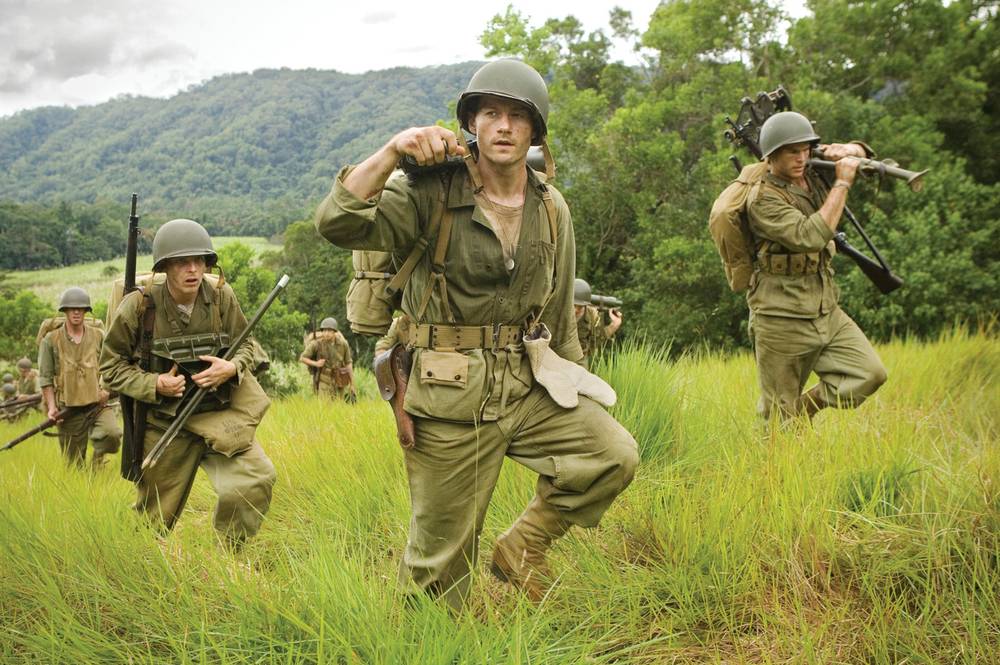Bullets and bombs fly from the first episode of The Pacific—HBO’s new Steven Spielberg/Tom Hanks-executive produced World War II miniseries—and that marks a significant divergence from the show’s masterful 2001 forerunner, Band of Brothers. By focusing on pre-war training for its first hour, that 10-part program familiarized viewers with its characters before embedding them in combat; this time, key figures reveal themselves on the run.
The Details
- The Pacific

It makes for a trickier entry point, but the payoff is almost as rewarding. Abandoning Band of Brothers’ relatively linear storytelling from the start, The Pacific (Sundays, 9 p.m., premiering March 14) feels as untidy as the Pacific campaign itself. These U.S. marines aren’t retaking the countries of Europe; they’re fighting over, in the words of one officer, “tiny specks of turf that we have never heard of”—Guadalcanal, New Britain, Peleliu, Iwo Jima and Okinawa. The underlying strategies are revealed in mini-documentaries accompanying each episode, but they’re not central to this story. At The Pacific’s core: the ground troops’ struggles with fear and helplessness in the face of a brutal enemy more willing to sacrifice itself in waves than surrender.
Where Band of Brothers followed historian Stephen Ambrose’s text of the same name, The Pacific was crafted from the firsthand accounts of two marines—mortar-man Eugene Sledge (expertly descended into darkness by actor Joseph Mazzello) and machine-gunner Robert Leckie (James Badge Dale)—along with the tale of hero John Basilone (Jon Seda), awarded the Medal of Honor for his role in Guadalcanal. Though some of Spielberg’s war-film trademarks are present—graphic, Saving Private Ryan-caliber fight scenes; attention to the battle zones’ natural scenery—The Pacific stands out for its gritty depiction of the soldiers’ daily lives: the never-ending torment of rain, filth, disease, sleep deprivation and a lack of food and potable water. Whether or not the horrific casualty count brings you to tears, at least plan on showering more vigorously on Monday mornings.
Though their paths crisscross occasionally, the three principal characters take fairly distinct journeys, and each hour of the show bounces among their various activities. At its best, as when the men arrive for R&R in Australia in Episode 3, the multi-pronged approach adds appreciable layers; at its worst, as when Leckie heads off for mental observation in Episode 4, it can feel somewhat random. But then, the more you watch, the less haphazard it feels. By series’ end The Pacific manages to make some sense of its disorganized and disheveled topic, and for that, if nothing else, it’s easily worth 10 hours of your life.


Previous Discussion: